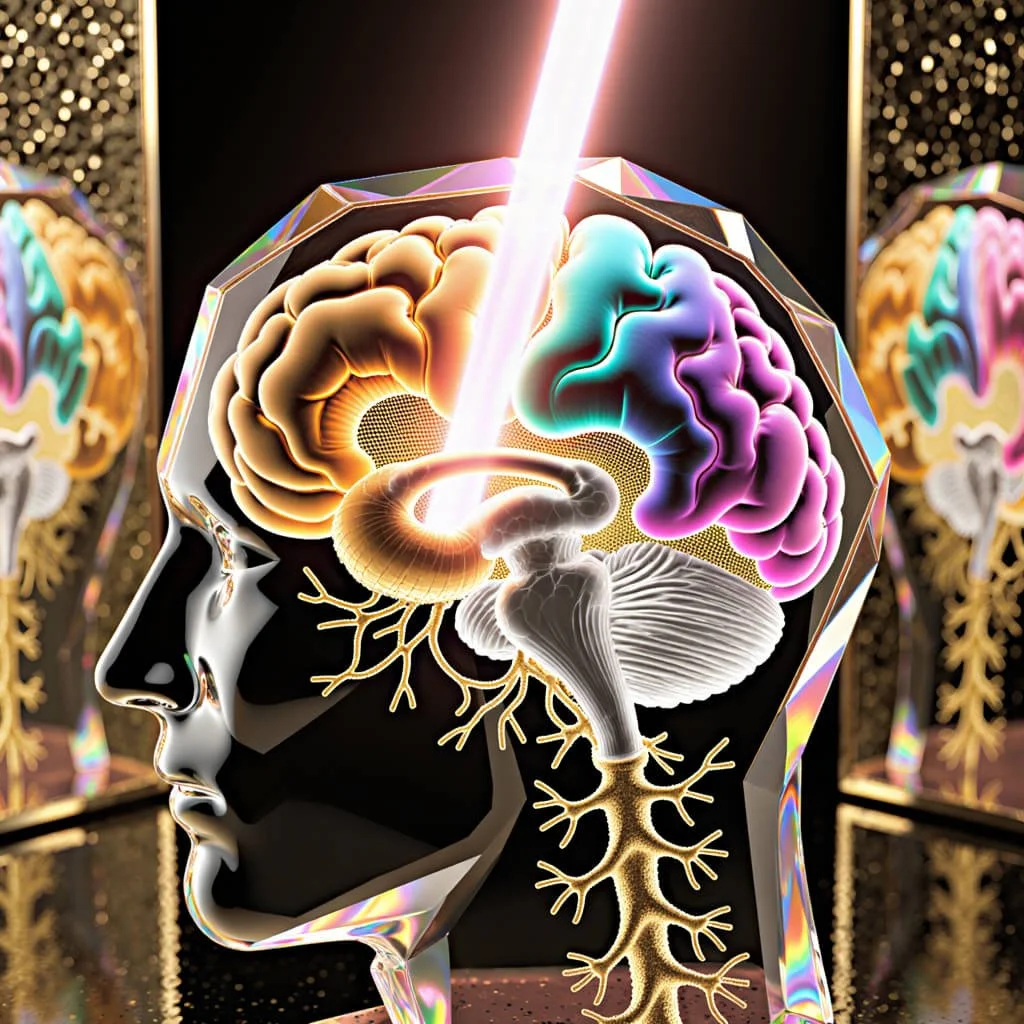Gartner Hype Cycle 2025: AI, Quantum Computing & Tech Trends
The technological landscape of 2025 presents a compelling paradox: while artificial intelligence has moved beyond the peak of inflated expectations, it continues to fundamentally reshape how organizations operate, innovate, and compete. Drawing insights from Gartner's latest analyses and findings from leading consulting firms including McKinsey, Deloitte, and Boston Consulting Group, this examination reveals how emerging technologies are transitioning from experimental curiosities to enterprise-critical foundations.
The 25 disruptive technologies identified in Gartner's 2024 Hype Cycle for Emerging Technologies fall into four key areas: autonomous AI, developer productivity, total experience, and human-centric security and privacy programs. As we progress through 2025, these technological themes have evolved from theoretical frameworks into practical implementation strategies that define organizational success.
The Maturation of Generative AI: From Hype to Reality
Perhaps the most significant shift in the technology landscape has been generative AI's journey through the hype cycle. Market research firm Gartner revealed that generative AI (genAI) has passed the "peak of inflated expectations" and is now sliding down into the "trough of disillusionment". This transition marks a critical inflection point where organizations are moving from experimental pilots to scalable, production-ready implementations.
The disillusionment phase, however, should not be interpreted as a failure of the technology. Rather, it represents a natural evolution where unrealistic expectations are replaced by pragmatic understanding of capabilities and limitations. While "uncertainty" is likely to remain a watchword for 2025, significant geopolitical and economic shifts as well as the relentless pace of technology (driven by "space-race" levels of investment in AI) suggest a year of significant changes.
Organizations are now focusing on specific, measurable applications rather than broad transformational promises. AI stands out from these inventions because it offers more than access to information. It can summarize, code, reason, engage in a dialogue, and make choices. This capability differentiation is driving more sophisticated implementation strategies focused on augmenting human capabilities rather than replacing them entirely.
In the ever-shifting terrain of technological advancement, the latest revelation by Gartner the renowned research and advisory firm, casts a spotlight on the promising landscape of emerging technologies. Among these, a remarkable standout emerges – Generative Artificial Intelligence (AI), poised on the precipice of the Peak of Inflated Expectations, as foretold by the Hype Cycle for Emerging Technologies, 2023. This prophetic positioning projects that Generative AI is on the brink of transforming the very fabric of industries and societies, anticipated to unfurl its metamorphic influence within a span of two to five years.
This notion of Generative AI as a harbinger of transformation is rooted in its intricate essence. Beyond the binary world of traditional AI, Generative AI brings to life a different breed of intelligence, one capable of birthing creations and concepts anew.
The Four Pillars of Emerging Technology Strategy
1. Autonomous AI: Beyond Generative Models
The evolution from generative AI to autonomous AI represents a fundamental shift in how organizations approach artificial intelligence implementation. AI engineering is the foundation for enterprise delivery of AI and GenAI at scale. Most organizations lack the data, analytics and software foundations to move individual AI projects to production.
Autonomous AI encompasses systems that can operate independently within defined parameters, making decisions and executing actions without constant human intervention. This includes AI agents that can manage complex workflows, autonomous systems for supply chain optimization, and self-healing IT infrastructure. The key differentiator is the ability to operate within enterprise environments while maintaining governance, compliance, and risk management standards.
Knowledge graphs have emerged as a critical enabler for autonomous AI systems. The two biggest movers on this year's Hype Cycle are AI engineering and knowledge graphs. These semantic networks enable AI systems to understand context, relationships, and domain-specific knowledge in ways that improve decision-making accuracy and reduce hallucination risks.
2. Developer Productivity: The New Competitive Advantage
Developer Experience (DevX) has evolved from a nice-to-have to a strategic imperative. Organizations are recognizing that developer productivity directly correlates with innovation velocity and competitive advantage. AI elevates the reach (and remit) of the tech function. As the tech function shifts from leading digital transformation to leading AI transformation, forward-thinking leaders are using this as an opportunity to redefine the future of IT.
AI-augmented software engineering has moved beyond simple code completion to comprehensive development lifecycle support. Modern AI tools now assist with architecture decisions, code review, testing strategy, and deployment optimization. This represents a fundamental shift from reactive support to proactive enhancement of the development process.
Internal developer portals have become essential infrastructure for managing complexity in multi-cloud, microservices environments. These platforms provide self-service capabilities for developers while maintaining governance and security standards. The integration of AI capabilities into these portals enables predictive resource allocation, automated troubleshooting, and intelligent workflow optimization.
3. Total Experience: Convergence of Human and Digital Interactions
The concept of Total Experience (TX) represents the convergence of customer experience, employee experience, user experience, and multiexperience strategies. Spatial computing takes center stage. What is the future of spatial computing? With real-time simulations as just the start, new, exciting use cases can reshape industries ranging from health care to entertainment.
Spatial computing has emerged as a transformative technology that blends physical and digital experiences. Unlike previous virtual reality implementations, spatial computing focuses on augmenting real-world environments with contextual digital information. This enables new forms of collaboration, training, and customer engagement that were previously impossible.
The integration of spatial computing with AI creates possibilities for personalized, context-aware experiences that adapt to individual preferences and behaviors. Healthcare applications include surgical planning and training, while manufacturing uses include assembly guidance and quality control. The retail sector is exploring spatial commerce experiences that bridge online and offline shopping.
4. Human-Centric Security and Privacy: Trust as a Strategic Asset
As organizations become increasingly dependent on AI and automated systems, security and privacy have evolved from compliance requirements to strategic differentiators. The new math: Solving cryptography in the age of quantum. Quantum computers are likely to pose a severe threat to today's encryption practices. Updating encryption has never been more urgent.
The emergence of quantum computing creates both opportunities and threats. While quantum technologies promise unprecedented computational capabilities, they also threaten existing cryptographic systems. Organizations must balance the adoption of quantum-resistant encryption with the practical realities of legacy system integration.
Generative cybersecurity AI represents a paradigm shift in threat detection and response. These systems can identify novel attack patterns, generate defensive strategies, and automate incident response. However, the same technologies can also be used by malicious actors, creating an arms race between defensive and offensive capabilities.
Embracing Cloud's Luminous Evolution:
As clouds gather and computing takes flight, the evolution of cloud technology echoes like a symphony. It transforms from a mere innovation platform to an architect of business innovation, casting its influence far and wide. Cloud adoption, with its promises of automation and vertical specialization, offers an orchestration of possibilities. As this technology swells, the maestros of transformation guide their organizations to embrace cloud development environments, sustainable practices, and cloud-native solutions. These choices are akin to selecting the right notes, culminating in a harmonious composition that amplifies the returns on cloud investments.
Weaving the Fabric of Security and Privacy:
In the age of digital vulnerability, where cyber threats prowl like shadows, the guardians of organizations adopt a unique stance. They recognize that security and privacy are not mere appendices; they are the very fabric of trust and resilience. With AI as an ally, they venture into a realm where generative cybersecurity AI and homomorphic encryption are like shields and fortresses, shielding sensitive data from prying eyes. A culture of mutual trust is cultivated, and security becomes an intrinsic part of the digital design.
In this orchestration of technologies, where AI dances alongside cloud innovation and security fortresses, organizational success finds its crescendo. The symphony of change is orchestrated not by a single note, but by the harmonious convergence of instruments – an ensemble that embraces diversity and navigates the complexities of transformation.
Consulting Firm Perspectives: Strategic Implementation Insights
McKinsey's Technology Priorities for 2025
McKinsey's analysis emphasizes the need for organizations to move beyond proof-of-concept implementations to scaled, production-ready deployments. McKinsey's technology leaders offer their insights on how leaders can make the most of tech this year. The firm identifies several critical success factors:
Technology Leadership Evolution: Organizations must redefine the role of technology leaders from implementers to strategic orchestrators. This includes developing capabilities in AI governance, ethical AI practices, and cross-functional collaboration.
Talent Strategy Transformation: The focus shifts from hiring AI specialists to upskilling existing workforce members. This includes developing AI literacy across all business functions and creating career pathways that combine domain expertise with AI capabilities.
Operational Excellence: Moving from experimental AI projects to enterprise-scale implementations requires robust operational frameworks. This includes MLOps practices, model governance, and continuous monitoring systems.
Deloitte's Tech Trends 2025: AI as Infrastructure
In Deloitte's 16th annual Tech Trends report, AI is the common thread of nearly every trend. Moving forward, it will be part of the substructure of everything we do. This perspective emphasizes AI's evolution from a discrete technology to fundamental infrastructure.
Deloitte's analysis focuses on three key areas:
Elevating Forces: Technologies that expand possibilities and create new value propositions. This includes spatial computing, advanced AI models, and quantum computing applications.
Grounding Forces: Enterprise-critical systems that provide stability and reliability. This encompasses AI-enhanced IT operations, quantum-resistant cryptography, and modernized core systems.
Convergence Opportunities: The intersection of different technologies creates multiplicative value. Examples include AI-powered spatial computing, quantum-enhanced machine learning, and autonomous systems integration.
Boston Consulting Group's Strategic Framework
BCG's approach emphasizes the strategic transformation required to capture value from emerging technologies. The firm's framework focuses on:
Platform Thinking: Organizations must develop technology platforms that can support multiple use cases and scale across business units. This includes creating reusable AI components, standardized data architectures, and common governance frameworks.
Ecosystem Orchestration: Success requires coordination across technology vendors, implementation partners, and internal stakeholders. This includes developing vendor management capabilities, partnership strategies, and change management processes.
Value Measurement: Moving beyond traditional ROI metrics to capture the full value of emerging technologies. This includes productivity gains, innovation acceleration, and competitive positioning benefits.
Implementation Strategies for 2025
Strategic Technology Adoption Framework
Organizations successful in leveraging emerging technologies follow a structured approach that balances innovation with risk management:
Assessment Phase: Comprehensive evaluation of current technology landscape, capability gaps, and strategic objectives. This includes technical readiness assessments, organizational change capacity, and competitive positioning analysis.
Pilot Development: Targeted experiments with specific use cases, measurable outcomes, and defined success criteria. This phase focuses on learning and iteration rather than immediate scale.
Scale Preparation: Development of the organizational capabilities, technical infrastructure, and governance frameworks necessary for enterprise-scale deployment.
Production Deployment: Full-scale implementation with continuous monitoring, optimization, and expansion to additional use cases.
Governance and Risk Management
The rapid pace of technological change requires robust governance frameworks that can adapt to evolving capabilities and risks. Key components include:
AI Ethics and Governance: Establishing principles, processes, and oversight mechanisms for responsible AI development and deployment. This includes bias monitoring, transparency requirements, and accountability frameworks.
Data Management: Comprehensive data governance that addresses privacy, security, and quality requirements across all technology implementations. This includes data lineage tracking, consent management, and regulatory compliance.
Cybersecurity Integration: Security-by-design approaches that embed protection mechanisms throughout the technology stack. This includes quantum-resistant cryptography, zero-trust architectures, and continuous threat monitoring.
Future Outlook and Strategic Recommendations
The technology landscape of 2025 is characterized by the convergence of multiple transformative technologies rather than the dominance of any single innovation. Organizations that succeed will be those that can orchestrate these technologies into coherent, value-creating systems.
Key Strategic Recommendations
Embrace Platform Thinking: Develop technology platforms that can support multiple use cases and evolve with changing requirements. This includes investing in flexible architectures, standardized interfaces, and reusable components.
Invest in Organizational Capabilities: Technology transformation requires corresponding organizational evolution. This includes developing new skills, changing operating models, and fostering innovation cultures.
Focus on Integration: The value of emerging technologies lies not in their individual capabilities but in their integration with existing systems and processes. This requires comprehensive integration strategies and change management approaches.
Maintain Strategic Agility: The pace of technological change requires organizations to maintain flexibility and adaptability. This includes developing scenario planning capabilities, maintaining technology option portfolios, and creating rapid response mechanisms.
Conclusion
The emerging technology landscape of 2025 presents unprecedented opportunities for organizations willing to navigate the complexities of implementation and integration. While generative AI has moved beyond the peak of inflated expectations, it continues to serve as a foundational technology that enables other innovations.
The convergence of autonomous AI, enhanced developer productivity, total experience design, and human-centric security creates a technology ecosystem that is greater than the sum of its parts. Organizations that can successfully orchestrate these technologies while maintaining governance, security, and ethical standards will establish significant competitive advantages.
The journey from experimental technology to enterprise-critical infrastructure requires strategic patience, organizational commitment, and continuous learning. As we progress through 2025, the organizations that emerge as leaders will be those that have successfully transformed their technology capabilities from reactive implementations to proactive strategic assets.
The future belongs to organizations that can effectively balance innovation with responsibility, speed with stability, and transformation with continuity. The emerging technologies of 2025 provide the tools for this balance, but success depends on the wisdom to use them effectively.































